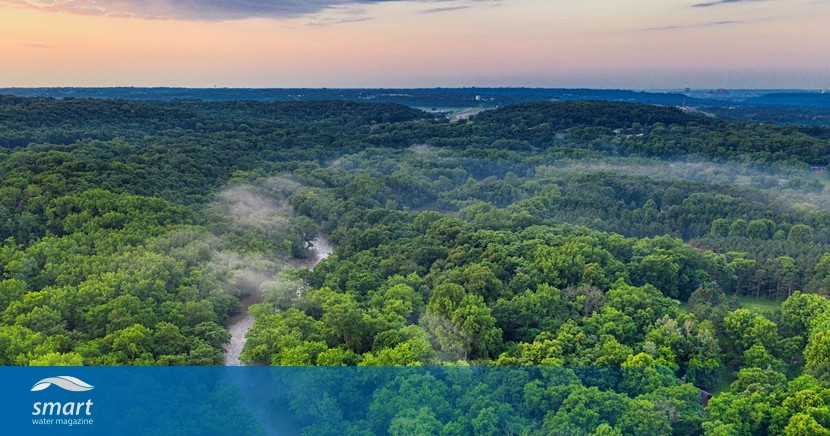Countries with lower credit ratings are increasingly utilizing debt-for-nature swaps to manage their financial liabilities while supporting environmental conservation initiatives. This trend is gaining traction with the backing of multilateral development banks and an expanding pool of diverse investors, according to Latin Finance.
Joan Prats, a principal financial specialist at the Inter-American Development Bank (IDB), has been at the forefront of structuring guarantees for these transactions in countries like Ecuador, Barbados, and The Bahamas. “We are having many conversations and there is a lot of interest in the region,” Prats noted. “Many countries are interested in doing these types of transactions. At the same time there are certain preconditions that the country must meet for us to intervene. There needs to be a clear commitment of the country with a development program and a situation in which the guarantee can generate enough savings and be an efficient way to intervene,” he explained.
Initially, debt-for-nature swaps were introduced to combat the rapid depletion of natural resources and biodiversity in heavily indebted developing nations. These arrangements typically involve refinancing part of a country’s debt at lower interest rates, facilitated by sustainability-linked clauses that allow for a “green premium” or ‘greenium.’ A portion of the resulting savings is then allocated to local conservation projects.
Ecuador recently completed a debt-for-nature swap that enabled the refinancing of $1.53 billion in international bonds. This follows its 2023 inaugural deal aimed at conserving the Galapagos Islands. The latest transaction is expected to generate approximately $460 million for conservation efforts, focusing on 6.4 million hectares of land and freshwater ecosystems in the Amazon. Prats highlighted this as a groundbreaking deal due to its focus on terrestrial conservation and the scale of financial savings it achieves.
“Governments increasingly see this type of instrument as a new tool in their policy toolkits. Firstly, they provide conservation funding, but at the same time they do so without increasing — and sometimes even reducing — the debt stock of a country. This is important for certain countries that have reached a level of debt where they cannot incur more debt to finance the environment, biodiversity or sustainability,” Prats said.
Focus on water resilience
Earlier this month, Barbados finalized a debt-for-climate swap that generated $125 million in fiscal savings, earmarked for resilience projects. These include reducing water loss, enhancing wastewater infrastructure, and boosting institutional capacity for the South Coast Water Reclamation Facility, one of the first in the Caribbean to treat wastewater for reuse in irrigation and groundwater recharge. The IDB played a pivotal role by providing a $40 million loan for the initiative in July, followed by a guarantee for the debt swap.
According to Prats, debt-for-nature or debt-for-climate swaps utilize a “use-of-proceeds” model, where savings are monitored through a governance structure to ensure proper allocation of funds. These transactions also include key performance indicators (KPIs) or milestones that incentivize issuers to meet ecological targets. Failure to achieve these targets could result in penalties or increased debt funding costs, mechanisms integrated into the swap’s structure. Unlike sustainability-linked bonds, these penalties are managed through an independent trust fund, preventing conflicts of interest for investors.
“This is very important because what we realised talking to investors is that they don’t want to be in a conflicting position, since sustainability linked investing could sometimes put the investor in that position, since investors could be benefiting if a country doesn’t meet a sustainability commitment,” Prats said. “These transactions introduce the incentive but do it through another channel: they go to the same purpose through an independent trust fund.”
Enhancing transparency
In October, El Salvador completed a nature swap supported by organizations like the US International Development Finance Corporation (DFC) and Latin American development bank CAF. These institutions provided credit enhancements for a $1 billion JPMorgan loan aimed at repurchasing global bonds. The loan was secured with $1 billion in political risk insurance from DFC and a $200 million standby letter of credit from CAF. Such credit enhancements are essential for facilitating large-scale transactions, as banks may lack the capacity to absorb significant risk associated with lower-rated countries.
“These custom-made transactions had been quite rare in the past, but activity has picked up” in the last year, said Viktor Szabo, investment director for emerging market sovereign debt at abrdn. “This year Bahamas, Barbados, Ecuador and El Salvador, all single B rated, have completed [nature swaps], with many more countries being rumored as working on deals. However, there remains limited visibility on these deals, while the resulting credit-enhanced instruments often fall outside of the core EM investors’ scope.”
Prats acknowledged these concerns, stating that the IDB is actively working to enhance transparency. “In debt-for-nature swaps, it is true that the reports are more sophisticated in terms of how for example a protected area is being generated and milestones achieved,” he stated. “But the institutions that provide those reports are technical and publish on a yearly basis and there are strong contractual obligations to provide that.”




